|
|
|
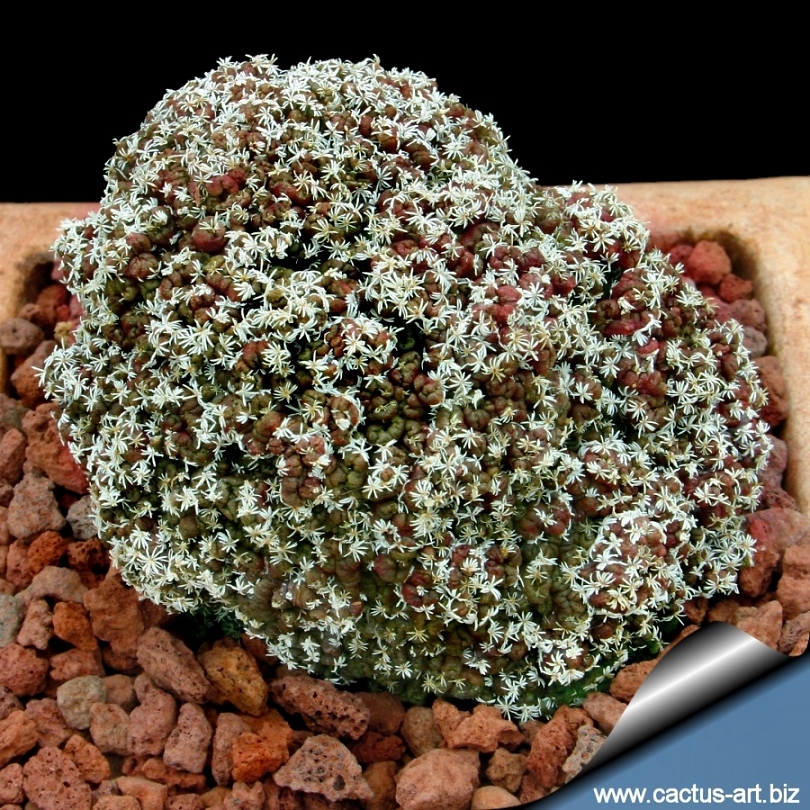
Turbinicarpus lophophoroides forma mostruosa
This plant is recognizable without problems for the tiny tangled
body which is dark olive-green with brownish-purple tint. The spines are
like small white stars.
|
|
Description: The standard
T. lophophoroides is a well known solitary, globose cactus,
but the monstrous mutant here described is a completely different
looking plan that forms small compact mound up to 10 cm in diameter. It
looks like a strange marine creature than a cactus, similar to a dark
coral with hundreds of white individual
polyps, each polyp only a few millimetres in diameter.
Stems: It is formed by an intricate multitude of small tangled
protrusion of soft, rubbery-textured bumps, only a few mm across. The
stem is purplish-green, and in full sun take a very dark colouring
(almost black)
Areoles: Very small not woolly.
Spines: About 8-10 radially spreading, white, very short (1-2 mm
long) that remembering a small star or a white spider.
Flower: Unknown.
|
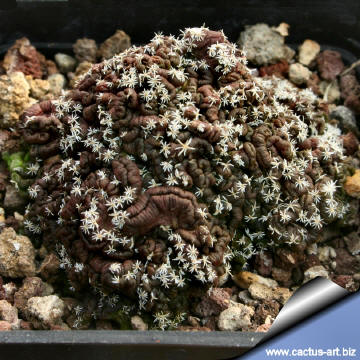 |
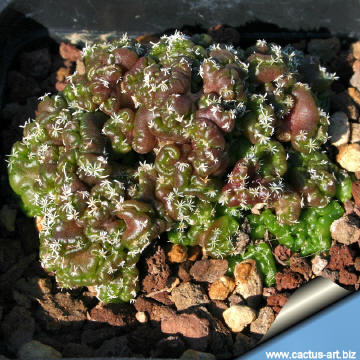 |
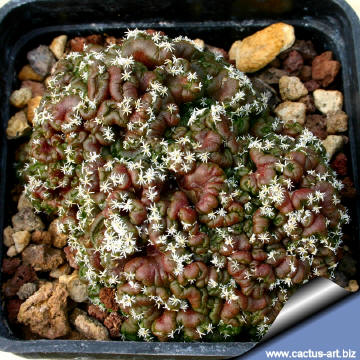 |
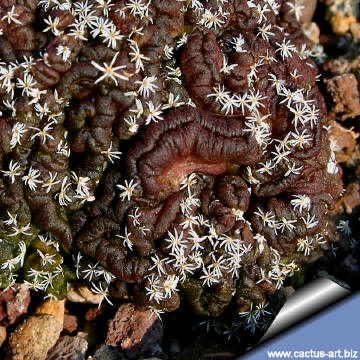 |
|
Photo of conspecific taxa, varieties, forms and
cultivars of Turbinicarpus lophophoroides:
Advertising
|
|
|
|
|
Family:
Cactaceae (Cactus
Family)
Scientific name: Turbinicarpus lophophoroides (Werderm.) F. Buxb.&
Backeberg 1937 forma mostruosa
Origin:
Garden origin (Nursery
produced cultivar)
Conservation status: Listed in
CITES appendix I
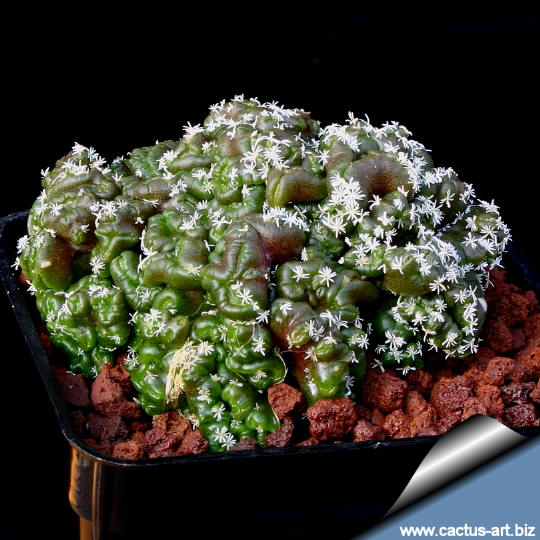
|
|
|
|
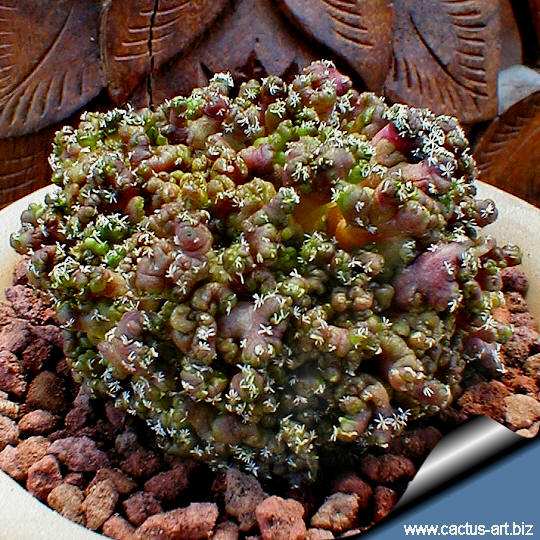
Cultivation: It’s a fairly
easy cultivar to cultivate plant adapted to a specific type of soil but, but
very slow growing. A 10 -30% of natural gypsum could be added to a very well
drained soil. Watering should be rather infrequent, but abundant, so
that the soil becomes completely soaked. Furthermore it has a
swollen juicy root system, and watering
it properly is often difficult and rot if
over-watered. Keep dry in winter, or when night temperatures
remain below 10° C. It is hardy to -4°C for a short period. Assure a
good ventilation. Exposures: Full sun where it obtains a natural-looking flat, or part sun. The fact that the plant
retracts into the soil and assume a red-brown colouring between
watering, is perfectly natural and doesn’t cause any damage.
Reproduction: Grafting or cuttings.
|
|

 |
|